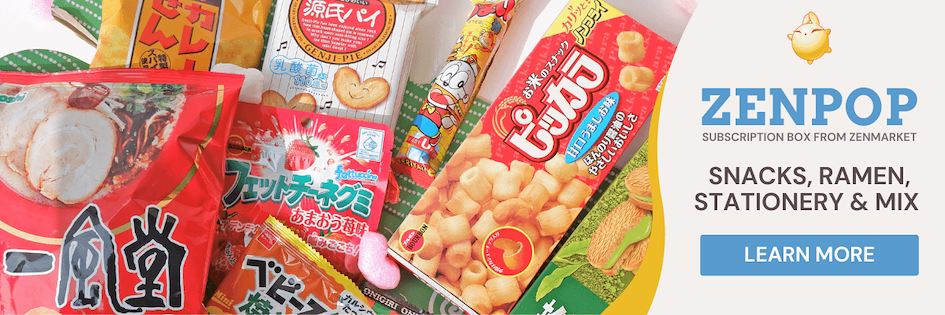Mochi or Omochi - a Japanese delicacy is taking the world by storm and the fascination surrounding it seems to be growing exponentially all over the world.
Everything about Mochi - its texture and taste, ingredients, method of preparation, historical and cultural significance, visual presentation, is all very uniquely Japanese.
Not only are the traditional versions of Mochi becoming more popular, but newer Mochi-based treats such as Mochi ice cream are on their way to setting global food trends. While Mochi remains one of the most sought-after Japanese specialties, many of us do not know a lot about Mochi. But that's going to change here and now.
This article will be your one-stop Mochi guide, telling you all you need to know about Mochi - including what it is, what it’s made of, and the mochi-making process.
Hungry for some Mochi knowledge? Let's jump right in for some sticky, delicious details!
What is Mochi? - A Sticky business
Mochi is most commonly described as Japanese rice cakes with a sticky texture, made using Japanese Mochigome (glutinous rice).
Is Mochi a cake? It is not fluffy or covered in icing, nor is it always eaten as a sweet dessert. And sometimes, it can even come in solid, dry, hard form.
On top of that, there is an overwhelmingly large number of variations of Mochi, and many common variations are often argued to belong to food categories other than Mochi.
Definition of Mochi:
For the sake of simplicity, Mochi can be said to be a Japanese food item that is made using Mochigome or Japanese glutinous rice grains that have been processed in some way (steamed, powdered, pounded, or ground) and then molded into some kind of shape or form.
Other ingredients can be added to the basic Mochi foundation such as water, sugar, and cornstarch.
When Mochi is served, it is usually accompanied by flavorings, toppings, fillings, sauce, etc. which can vary widely, some of the common ones being Japanese sweet red bean paste filling, fruit flavors, Kinako roasted soybean flour, etc.
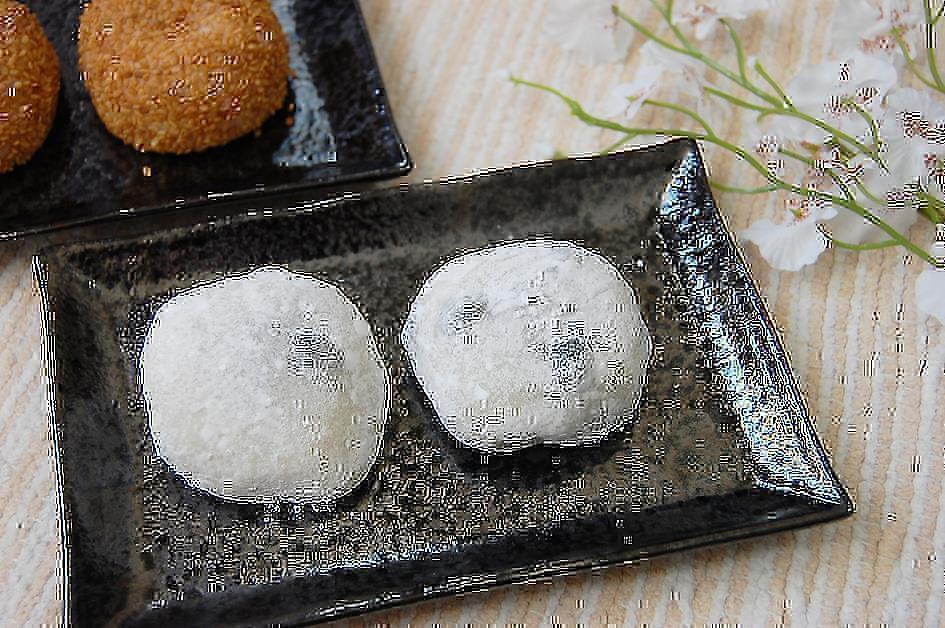
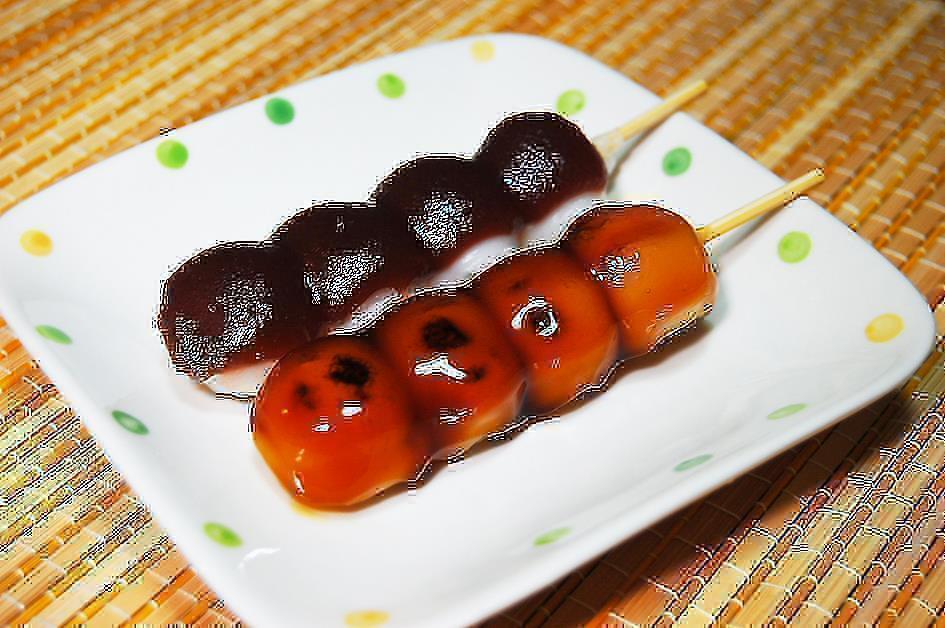
Mochi vs. Dango
Whether Dango and Mochi are completely separate types of food is an age-old debate that does not see any hope of being resolved in the foreseeable future.
However, the most widely accepted general idea is that Mochi is made from actual rice grains that have been steamed and pounded into a doughy paste form, while Dango and other non-Mochi categories of food are made from glutinous rice flour.
They also have differences in terms of texture, presentation, and serving style.
Mochi Mochi (Not to be confused with Moshi Moshi):
Mochi has such a deeply rooted place in Japanese culture that many words are derived from Mochi. One of the most commonly used among these is “Mochi Mochi" which is an adjective to describe something springy, sticky, soft, gooey, or supple. It can even be used to compliment someone’s skin; “Mochi-Hada” or “Mochi-Skin” describes healthy-looking skin that is flawlessly springy and supple just like a Mochi dough.
Basic Ingredients of Mochi – texture and consistency
When we think of Mochi, our head might bring up images of Mochi in lovely shapes and beautiful colors with all kinds of flavorings, fillings, and additional ingredients.
But for now, let’s keep those tempting images aside and dig deep into the core ingredients of Mochi in its plainest, most basic form.
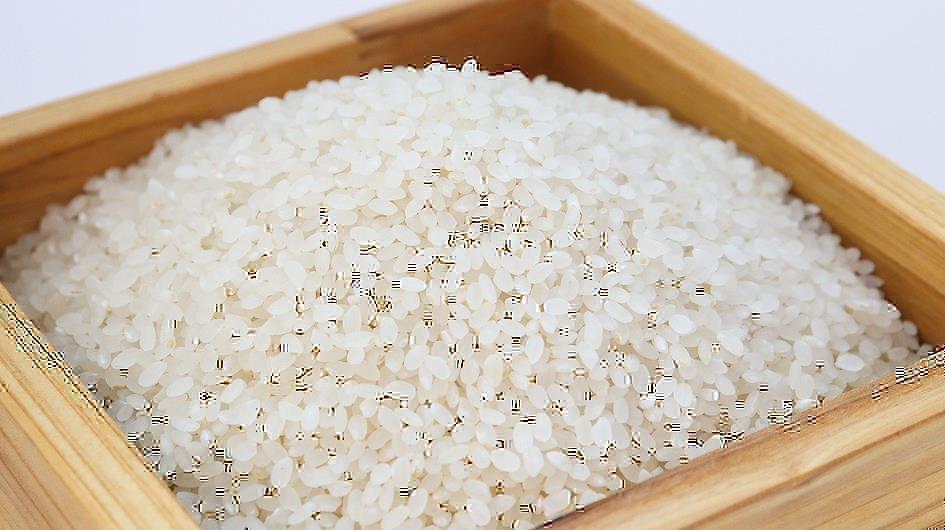
Mochigome Rice (もち米)
The main ingredient of Mochi is rice, not any type of rice but Mochigome, which is Japanese glutinous rice (a type of short-grain cultivar of Japonica rice: Oryza sativa subspecies Japonica).
It is also known by the common names Japanese glutinous rice or sweet rice.
One thing to note here is that word "glutinous" does not refer to Gluten but the glue-like texture of the cooked form of this rice, and glutinous rice is 100% gluten-free.
The grains of this rice are shorter, rounder, and opaque, with a faintly sweet flavor. The secret of Mochi’s unique squishy, gooey, and elastic consistency lies within the chemical composition of this rice. The two main starch components of rice are Amylose and Amylopectin.
- Amylose: Insoluble in water and does not render stickiness when cooked. Amylose content in Mochigome is so low, it is almost negligible.
- Amylopectin: Highly soluble in water and is responsible for making rice sticky and gooey when cooked. Compared to any other rice varieties, Mochigome has the highest Amylopectin content. That is why when Mochigome is steamed or cooked with water, it becomes so gooey and sticky.
Water And Air
This might sound like a joke but trust us, it’s not, and these are indispensable ingredients when it comes to making Mochi.
Water is needed to soften the rice grains and that is why the first step in Mochi making is to steam it. Water also plays a significant role in bringing out the stickiness of the rice grains.
In the Mochi-making process, the steamed rice is repeatedly pounded using heavy wooden tools, during which water is frequently added to the dough to prevent it from sticking to the pounding equipment and to stop the dough from becoming dry.
This repeated pounding also adds air bubbles to the dough giving it the bouncy and springy texture and without these textural qualities, it would not be a real Mochi.
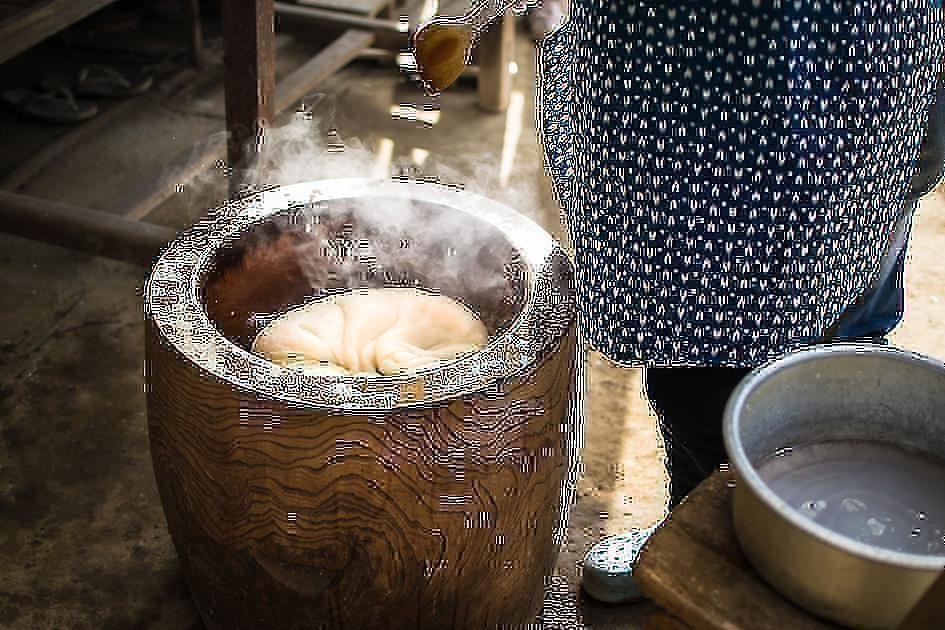
Mochitsuki – Traditional Mochi-making process: Rice, Tenacity, Teamwork
Mochi-Tsuki, literally translated to Mochi-Pounding is the age-old tradition of Mochi-making that is widely celebrated all over Japan even to this date.
Aside from ingredients and special tools, there are two other crucial aspects to Mochi making.
First of all, it takes time (at least more than a day), patience, and perseverance. Secondly, it is all about teamwork as it requires at least two people to do the pounding.
That is why Mochi-making is one of the most popular family and community activities in Japan where people of all ages come and enjoy making and eating Mochi.
These events can also be “Mochi-Tsuki Taikai” or “Mochi-pounding competition” where different teams engage in friendly competition in the Mochi-pounding process.
Mochi-Tsuki and the New Year’s Celebration
Although Mochi-making sessions are arranged as a community, school, or a neighborhood event any time of the year, it is most commonly done as a part of the New Year’s celebration.
In Japan, Mochi has been eaten during the New Year’s celebration since at least the 8th century, and Mochi is not only a major part of the Japanese New Year’s dishes and decorations, but it also holds symbolic significance in the welcoming of a new year.
“Mochi” sounds similar to the Japanese word for “to have” or “to hold” and Mochi is made and eaten during the new years in the hopes of gaining and holding onto good luck and fortune.
Tools needed for Mochi-making
These are the traditional Japanese tools used during Mochi-making
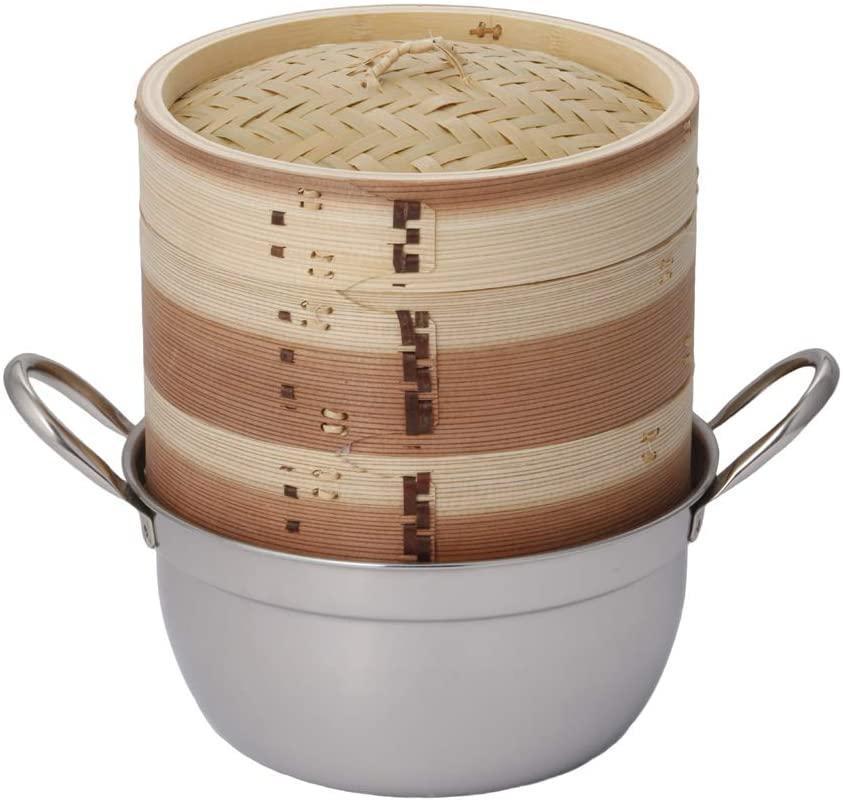
Seiro is steaming equipment used to steam the Mochi rice before it is pounded.
At the top part of the Seiro are several baskets made of wood, stacked atop one another. These baskets contain the rice during the steaming process, and the inside of the baskets are lined with a fabric netting to prevent the rice grain from sticking to the surface during the steaming process.
At the bottom part of the Seiro is a bowl of water which is the source of the steam and a fire below the water bowl that can be controlled through an opening at the base.
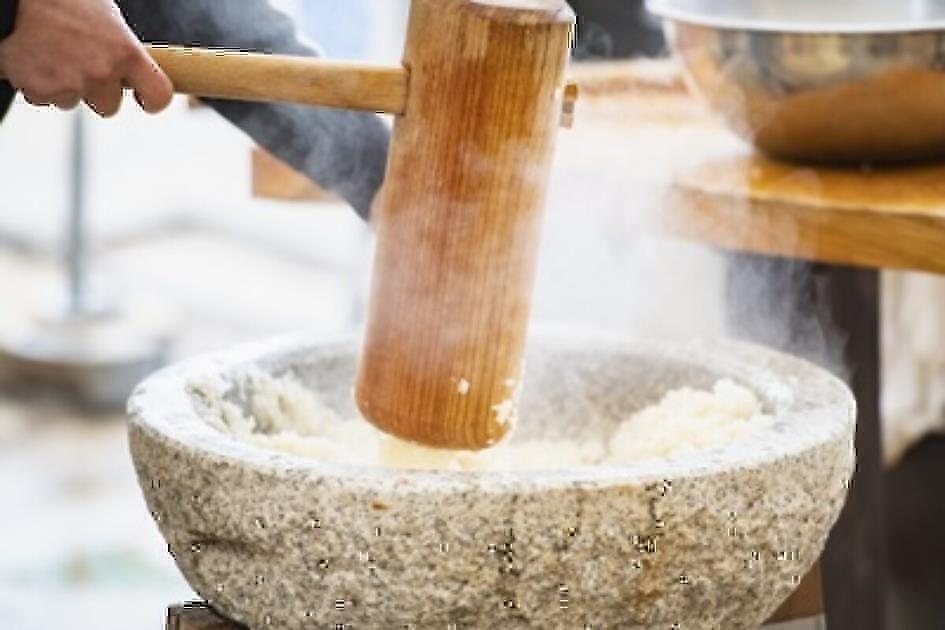
Kine is sometimes translated as a pestle, which is not entirely wrong but at the same time is a terrible understatement in terms of its size.
It is a long (more than 1 meter!), heavy wooden mallet that is swung with force and then brought down upon the mochi to stamp or pounds the mochi dough.
Before being used for pounding Mochi, the ‘head’ of the Kine is soaked for hours in a tub of water so that dry wood pieces do not chip off the head of the Kine during the Mochi (now you can guess how much strength it takes to pound the mochi!)
Usu is the mortar that holds the Mochi during the whole process and is usually about one meter high and has a diameter of about 30 cm.
The Usu is usually made of wood or stone. If the Usu is wooden, it is also kept wet by filling it with water for a few hours before Mochi-making to prevent it from cracking under the Mochi-pounding forces.
A pedestal or a stage made of thick boards is often used under the Usu to adjust the height of the Usu and at the same time to give it support.
The Mochi Making Process
- The Mochi rice is washed thoroughly and then soaked in water overnight (or at least 6-8 hours) before the day of the Mochi-making.
- The rice is then placed inside the wooden baskets of Seiro for steaming. The appearance of holes known as “crab holes” (because they resemble holes made by crabs on sand) on the rice surface confirms that the rice is ready to be pounded.
- When the steamed rice mass is first placed inside the Usu, it is treated rather gently by mashing it softly using a spatula or the Kine.
- Once the rice mass starts to look smoothed out, the Mochi-pounding can begin!
- One person handles the Kine, wielding it with force and smashing down on the Mochi inside the Usu, while the other person wets and turns it in frequent intervals with water. The two persons – the person pounding the Mochi with the Kine and the person turning and wetting the Mochi between each strike have to work in a steady rhythm, as the latter is at the risk of having his hand injured with the force of the Kine. This is usually ensured by chanting rhythmic words of encouragement in loud voices during the pounding process.
- In this way, the pounding is done for at least 10 – 15 minutes until all the rice grains disappear into a giant mass of sticky and stretchy deliciousness.
- The giant mass of Mochi is removed from the Usu and then cut into smaller sizes and then molded into different shapes, coated with different toppings or dipped into sauce or soup and enjoyed.
These are the steps of the Mochi-making but since Mochi-making is a group event, this same process is repeated for several batches.
People take turns in pounding the mochi as it is very demanding physical work.
Apart from the pounding, the beauty of teamwork is evident throughout the Mochi-making process as people take turns doing other important tasks such as maintaining the fire under the Seiro, cutting and shaping the Mochi, and distributing the prepared Mochi to everyone, making sure every person got to taste the result of their hard work.
Different variations or types of Mochi
Through the process described above, you have come to know how the plain, basic form of Mochi is made. But the real fun part starts here as you explore through a wide variation of Mochi that you can start adding to your must-try Mochi list!
Sweet varieties
Most common types of Mochi are sweet and many of them make up a major part of Wagashi or traditional Japanese sweet confections.
Sweet Mochi is served as a dessert often accompanied by green tea. A bite from a sweet mochi followed by a sip of green tea – a match made in heaven. Here are some of the most common types of sweet Mochi that you can find in Japan.
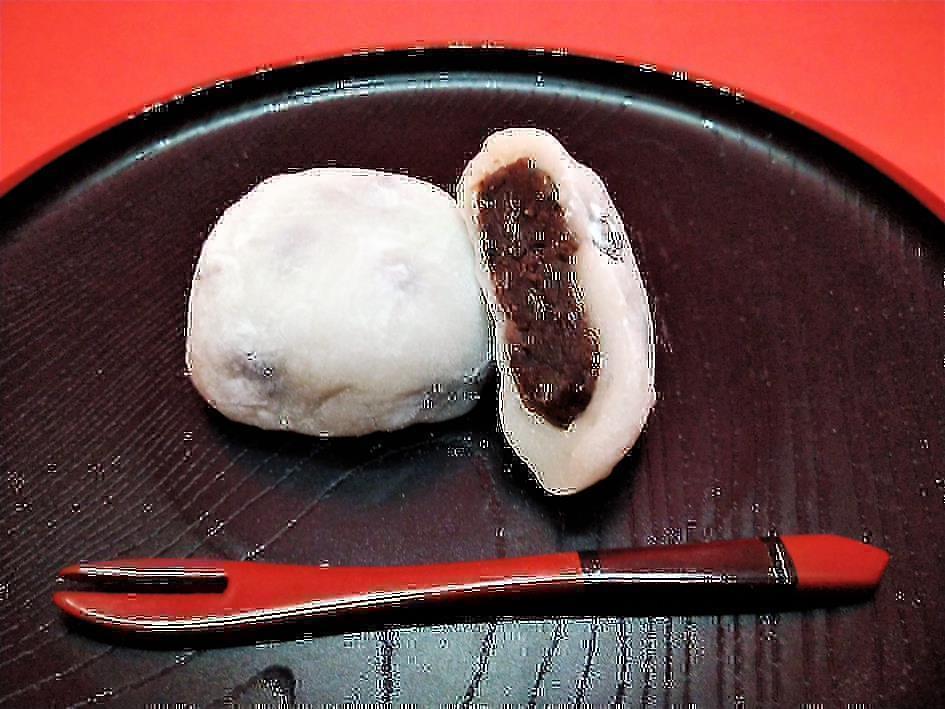
Daifuku
Daifuku are spherically shaped Mochi with a sweet filling.
The size of a Daifuku is about 4cm in diameter. The traditional filling is Anko – sweetened red bean paste, but the filling can be of many different kinds such as chestnut puree, sweet sesame paste, real fruits, etc.
Apart from having a filling, it is also common for the outer Mochi of a Daifuku to be flavored or colored; the most common colors being pale-green, pale-pink, or white.
Fun fact: The literal translation of Daifuku means “Great Fortune” or “Great Luck” in Japanese.
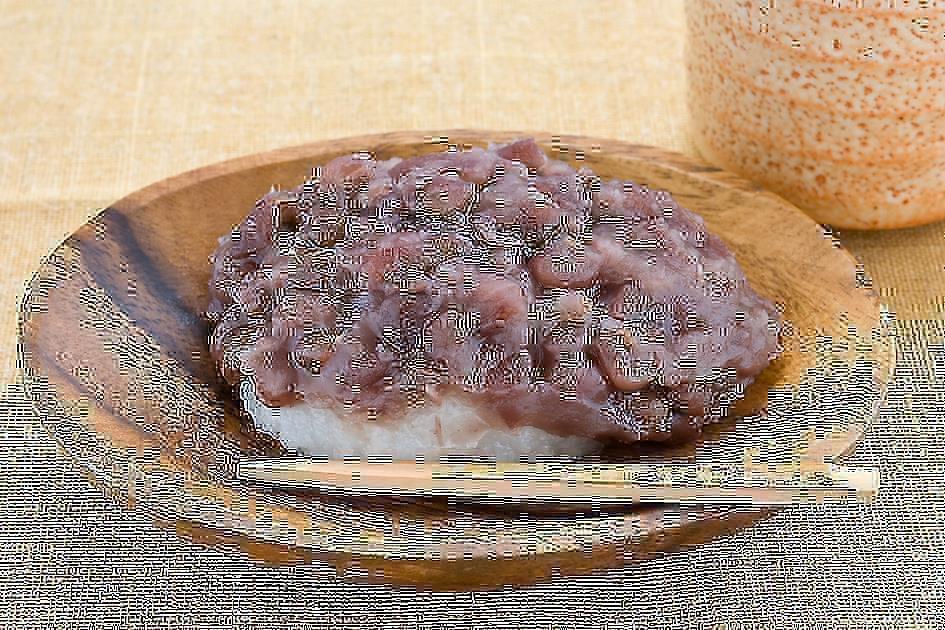
Botamochi
Botamochi is like a reverse version of Daifuku, where the filling is on the outside and the Mochi is on the inside.
The outer layer is usually made with sweet red bean paste. The name comes from “Botan” or Japanese peony flower.
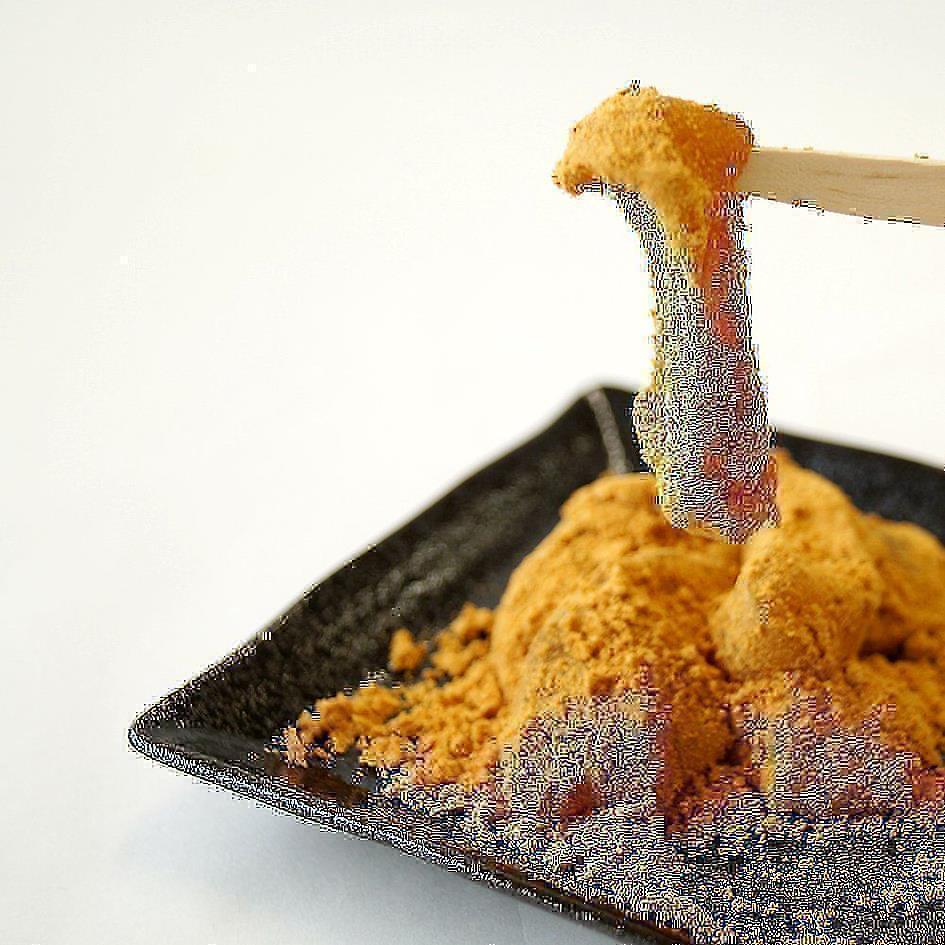
Kinako Mochi
Kinako Mochi is Mochi served with Kinako powder.
This is one of the most classical ways of enjoying Mochi and is undeniably one of the best ways too! Kinako is roasted whole soy flour and it is a common ingredient in Japanese cuisine. As pure Kinako is not naturally sweet, sugar can be mixed with the Kinako before it is sprinkled on the Mochi.
Alternatively, Kuromitsu (black sugar syrup similar to molasses) can also be drizzled onto Kinako Mochi for something extra special. Kinako’s rich nutty flavor and its powdery texture complement Mochi’s sticky texture in a uniquely delicious way.
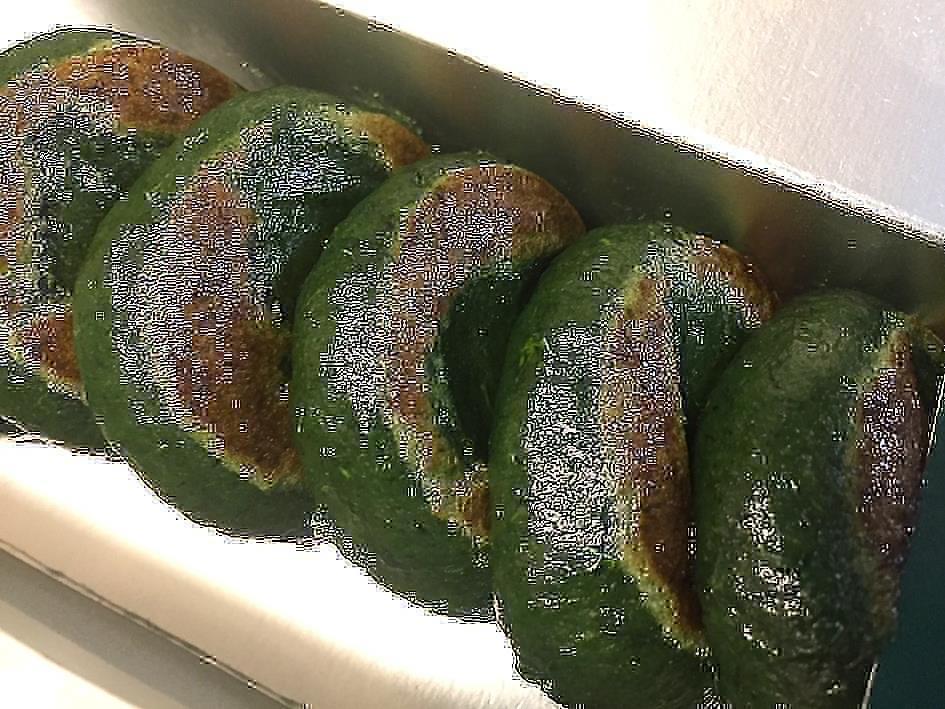
Kusa Mochi (or Yomogi Mochi)
Kusa Mochi is translated to "Grass Mochi”.
You might be thinking if this is the Japanese version of hash brownies but that is quite not the case. This special Mochi is made by kneading the leaves of Yomogi or Japanese mugwort plant into the Mochi dough. The Mochi has a characteristic green color and earthy, grassy flavors.
In many parts of the world, this plant is known to have medicinal qualities and to boost fertility.
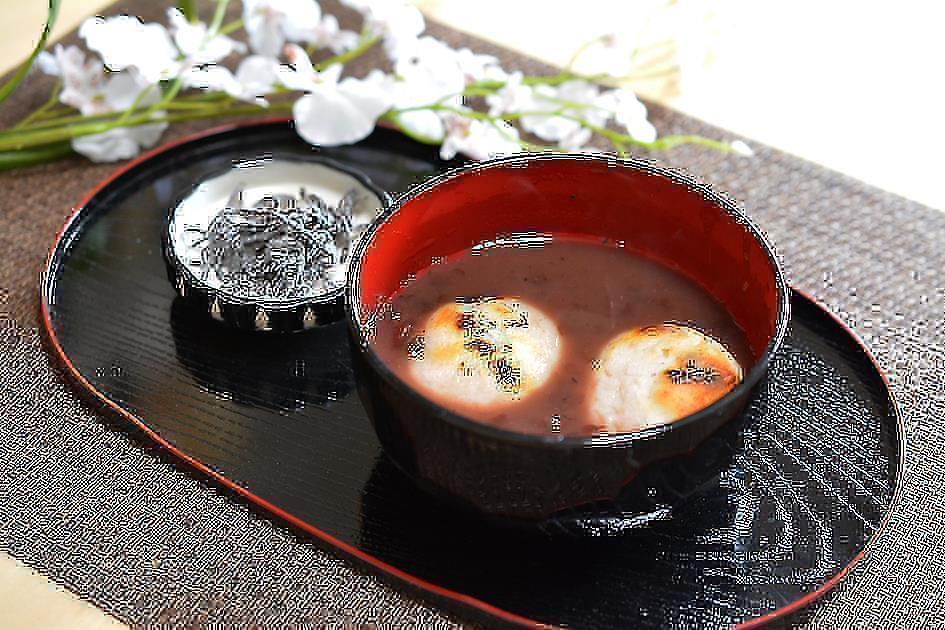
Oshiruko
This is the perfect comfort food, especially enjoyed warm during the winter.
It is a bowl of sweet porridge made from red Azuki beans, in paste or crushed form with Mochi in it. The Mochi used in Oshiruko can be toasted, which adds a crunchy texture to the Mochi.
Savory varieties
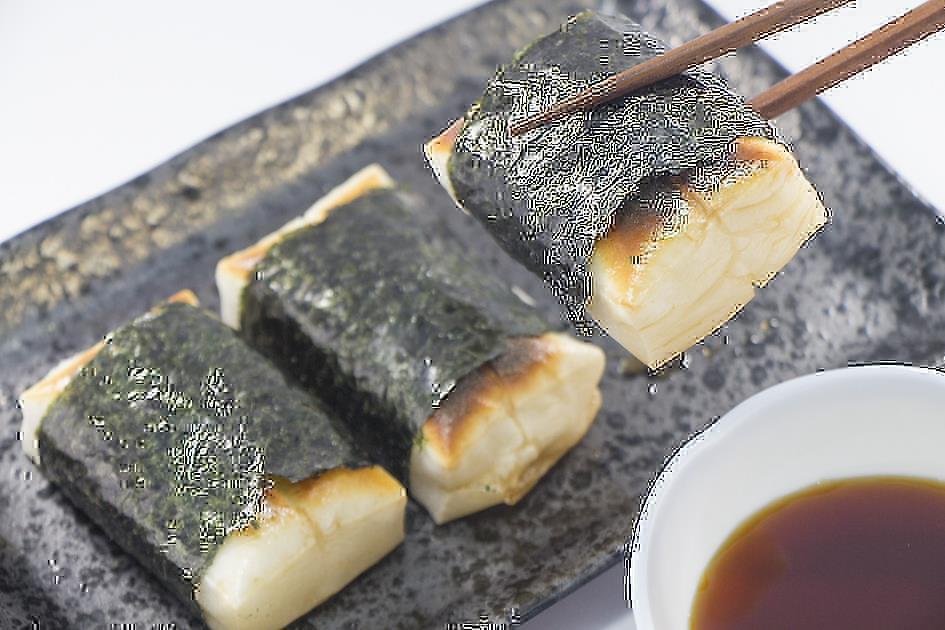
Isobe Maki
Isobe means ‘seashore’ and maki means 'roll'.
The connection to the sea comes from the fact that it is wrapped in dried Nori (seaweed) sheets. It is one of the most common ways Mochi is enjoyed at home, as this very forgiving recipe makes even the simplest store-bought Mochi taste incredibly good.
For Isobe Maki, Mochi is toasted, then dipped in soy sauce and wrapped with Nori seaweed sheet and enjoyed.
The savory umami of soy sauce, the crunchiness of the seaweed, and the warm stretchy Mochi – there is nothing quite like it!
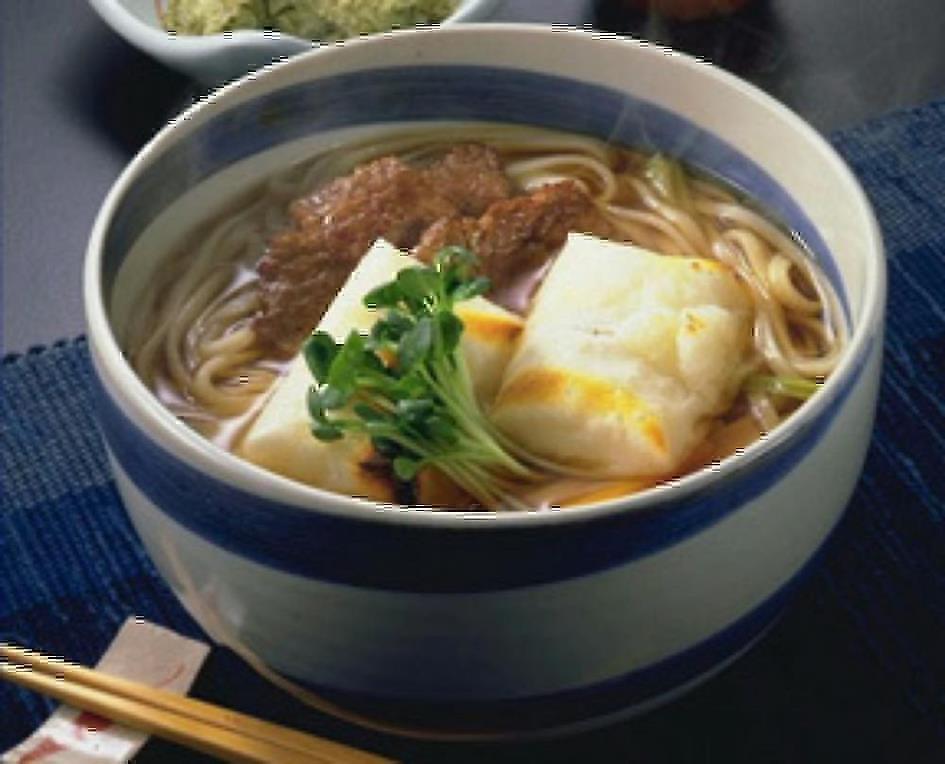
Chikara Udon
Udon is a Japanese noodle variety like Soba and Ramen.
It is usually served in a bowl of broth with other ingredients as toppings. The highlight of this Udon bowl is the Mochi topping.
“Chikara Udon” translates to “Power Udon” and it is because both Udon noodle and Mochi provide you with energy as they are great sources of carbohydrate.
Regional specialties
Many Japanese regions have their own versions of Mochi and these regional Mochi specialties are regarded highly as a part of the regions’ Meibutsu (famous regional products) and are very popular as Maiyagegashi (Souvenir snack).
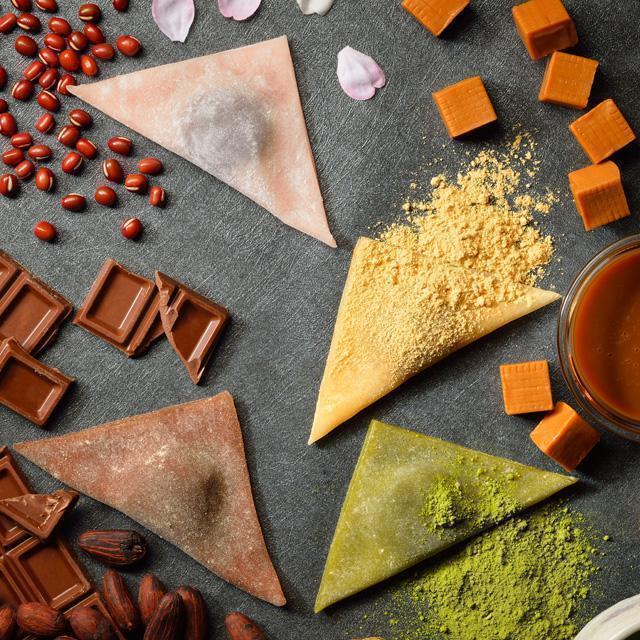
Yatsuhashi
Yatsuhashi means “Eight bridges” and this is a specialty from Kyoto, the region known as the true representative of Japanese culture and heritage.
Yatsuhashi can be found in baked, crunchy,cracker-like form or as “Nama Yatsuhashi” or “raw Yatshuhashi” which has the characteristic softness and chewiness of Mochi.
It is served in the shape of elegant triangular pockets with fillings such as sweet red bean paste, black sesame paste, white peach jam, etc.
One of the most popular flavors of Yatsuhashi is cinnamon flavor, which is interesting because the cinnamon flavor is rare in traditional Japanese confections.
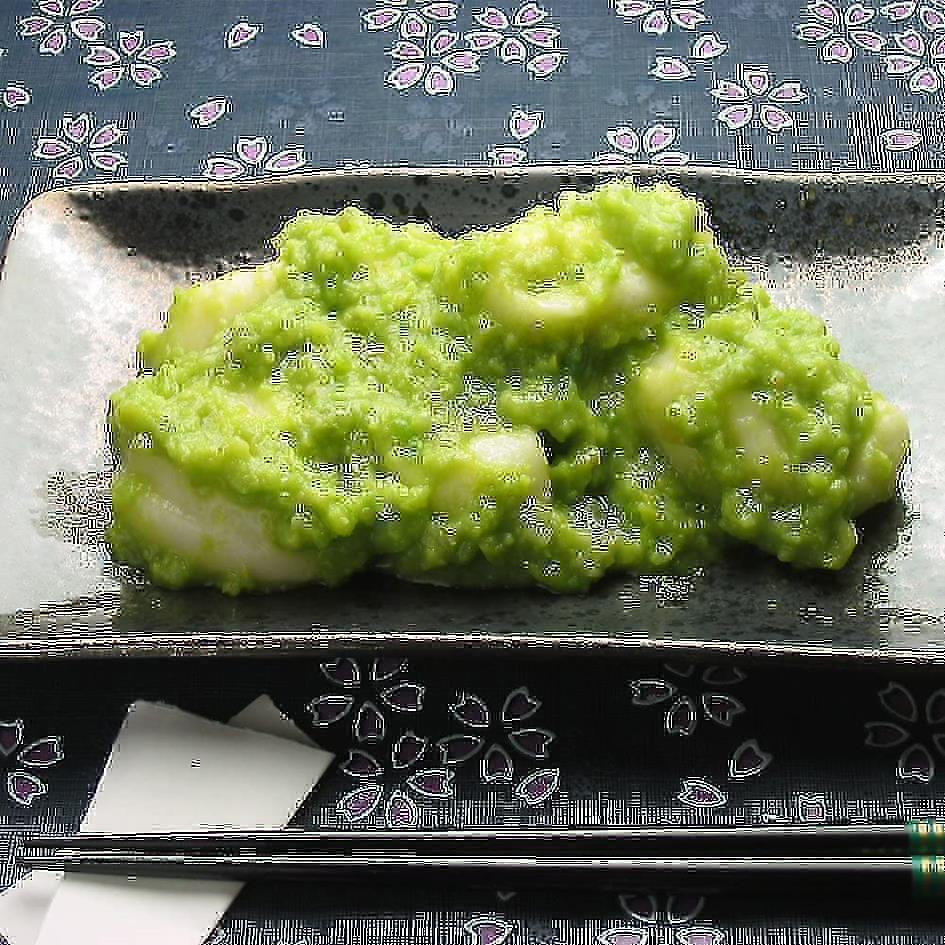
Zunda Mochi
Zunda Mochi is made by covering Mochi in sweet mashed Edamame beans.
Zunda Mochi is not only hearty and delicious but also beautiful to look at, thanks to the bright green color of the mashed Edamame beans.
This is a specialty of the Northeastern region of Japan and is known to have originated in the city of Sendai.
Fun fact: A female character called “Zunko” based on Zuna Mochi, was created to lead many campaigns for promoting the recovery of the Northeastern region from the 2011 Tohoku earthquake and tsunami.
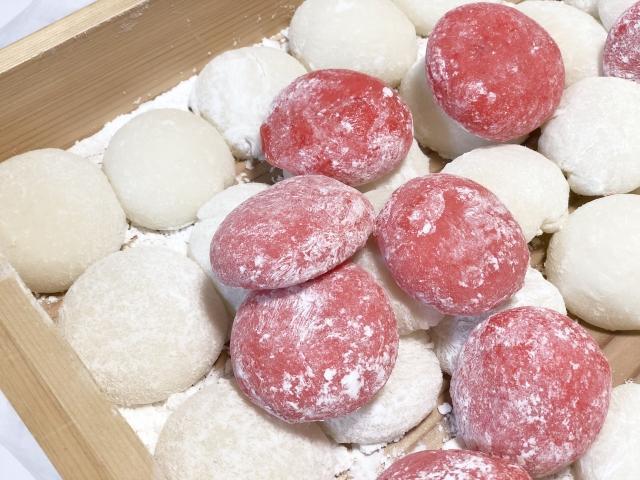
Ebi Mochi
Ebi in Japanese means shrimp and this unique savory Mochi dish is from Iwate prefecture, a coastal region of Japan.
In this version of Mochi, freshly made Mochi is cut into small bite-size pieces and coated with locally produced tiny freshwater shrimps called “Numa Ebi” that has been seasoned with Sake and salt. The contrast between the bright pink shrimps and the white Mochi is strikingly beautiful.
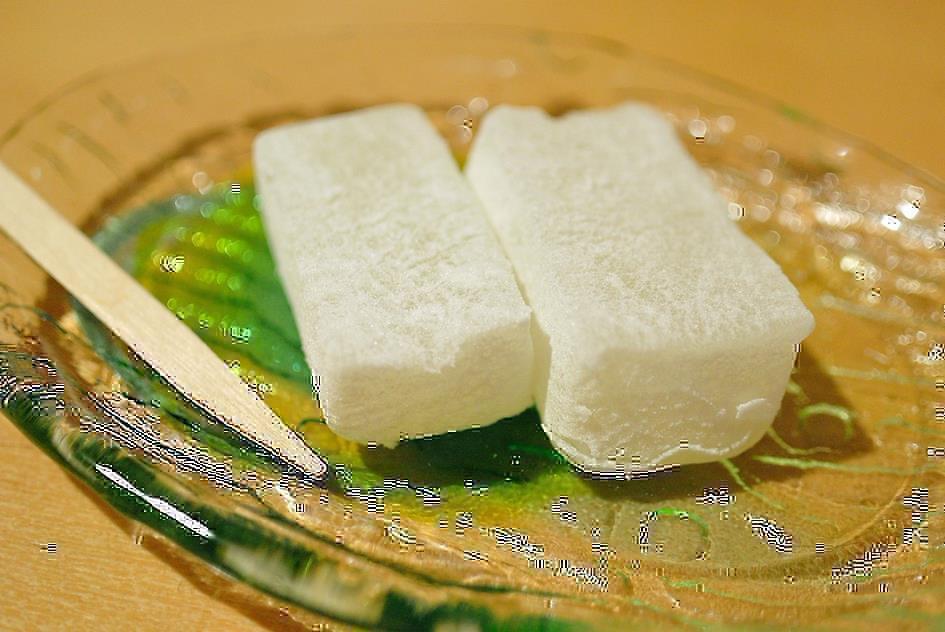
Habutae Mochi
This Mochi is from Fukui prefecture, a place known for its silk industry.
The name “Habutae” comes from “Habutae silk” which is produced in this region and is known to be the best silk in Japan.
Just like silk, Habutae Mochi is elegant, silky smooth, and translucent. It is made with a minimal amount of flavorings with most of the taste coming from starch and sugar syrup.
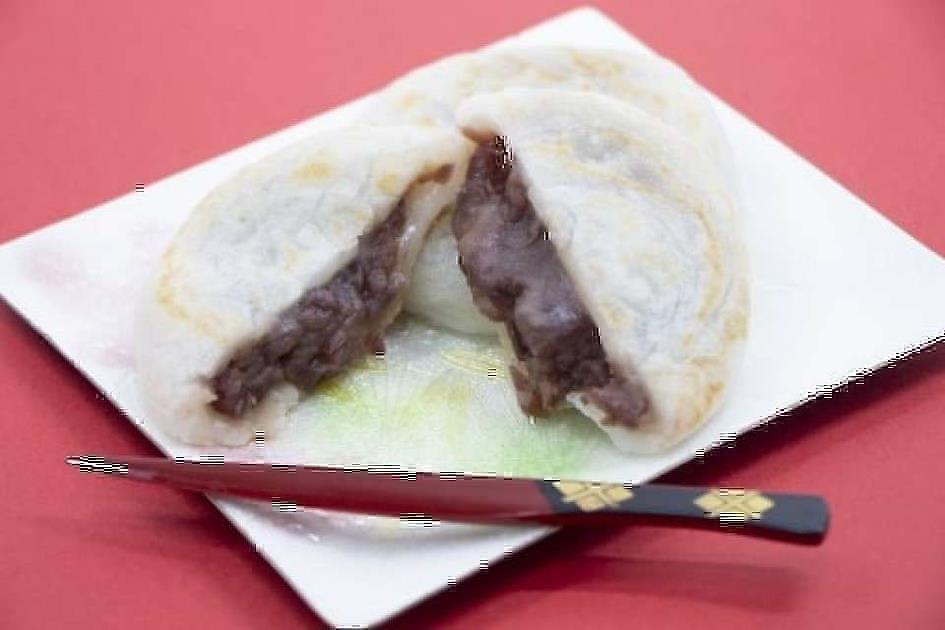
Umegae mochi
Umegae Mochi is a local specialty of Dazaifu, a city that has been associated with academics and scholarly learning since the 7th century.
Under the shade of plum trees that line the temple street of this city are small Mochi shops grilling Umegae Mochi and serving it to the long queues of people who line up to have a taste of this unique Japanese treat.
Umegae Mochi has a sweet filling made of red azuki bean paste but the best thing about it is that it is served fresh off the grill – piping hot with a toasty layer of Mochi on the outside. On top of that, each Mochi has an imprint of “Ume” or “Plum” flower on top of it.
Seasonal and Festival specialties
As we have mentioned earlier, many Japanese seasonal celebrations and festivals are incomplete without Mochi, and below you will see some practical examples.
New Year’s
New Year’s celebration is the most important holiday in Japan and Mochi is an essential part of New Year’s festivities.
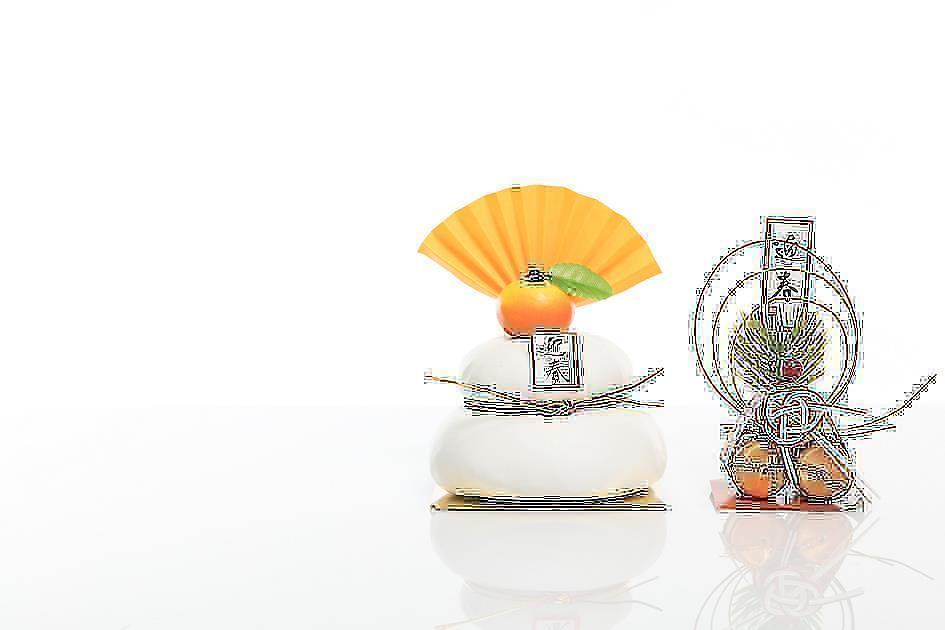
Kagami Mochi
Kagami Mochi is a bit like how a Christmas tree is for Christmas, but it only gets better because it can be eaten as well!
It consists of two spherically shaped discs or balls of dried Mochi that are placed on top of each other, with a Daidai (Japanese bitter orange) placed at the top.
This is the most basic form but Kagami Mochi varies from one household to another in terms of size, additional decorative items, where it is displayed, etc. Kagami Mochi is an indispensable part of the Japanese New Year's celebration. The two discs of Kagami Mochi symbolize yin and yang, day and night, the coming and the going year, etc.
The Daidai orange placed on top of the Mochi symbolizes the continuation of generations. On January 11th the Kagami Mochi is broken and eaten in different ways (usually toasted or cooked) in a special ceremony called the “Kagami-Biraki”.
Fun fact: Kagami-biraki is not only done at home but it is an important ceremony for Japanese martial arts schools and institutes.
The biggest Kagami Biraki festival is held at Kodokan, a famous Judo school in Tokyo every year, where more than 600 participants share pieces of Kagami Mochi after the first Judo training session of that year. Kodokan has been keeping this Kagami Biraki tradition since 1884!
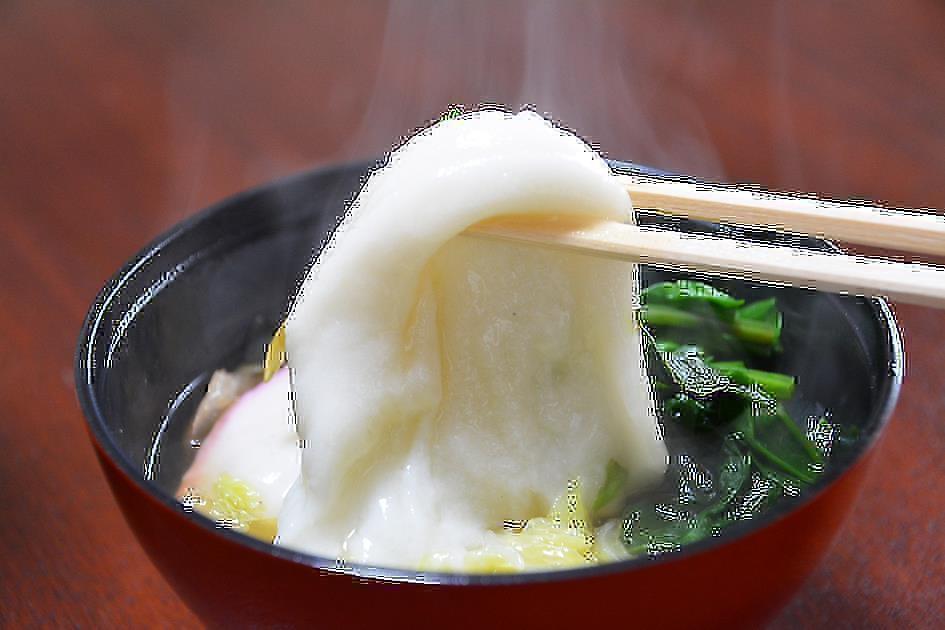
Ozouni
Ozouni is a savory soup dish made with Mochi as the essential ingredient.
It also contains other ingredients such as vegetables, meat, fish, etc. but the type of broth, ingredients, the shape and size of the Mochi, and how the Mochi is prepared before being added (toasted, grilled, or boiled) vary by family and region.
Ozouni is one of the most important New Year's dishes in Japan and eating this during the first days of the year is known to bring good luck and good health for the rest of the year.
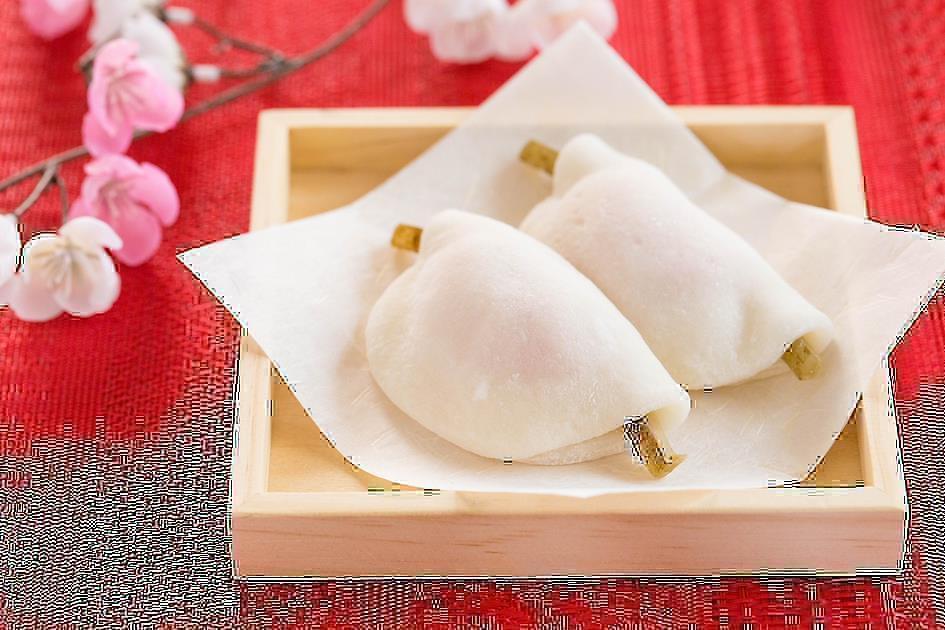
Hanabiramochi
“Hanabira” means flower petal and this sophisticated Mochi is made in the resemblance of a petal – usually semicircle with shades of pink that is brightest at the center and gradually fading into white around the edges.
It has a sweet white filling at the center made with mung bean paste and a thin strip of burdock root through the centerfold, in a way that the edges of the root are sticking out on both sides.
The pink color symbolizes the Japanese plum which represents purity and renewal associated with New Year and the burdock root symbolizes longevity and good health.
Japanese confections served at traditional tea ceremonies are special kinds of wagashi (traditional Japanese sweets) that are more sophisticated, elegant, and subtle in terms of taste, flavoring, and appearance compared to casual sweets.
This is true for Hanabira Mochi as well since Hanabira Mochi is traditionally served during the first tea ceremony of the year during the New Year’s celebration.
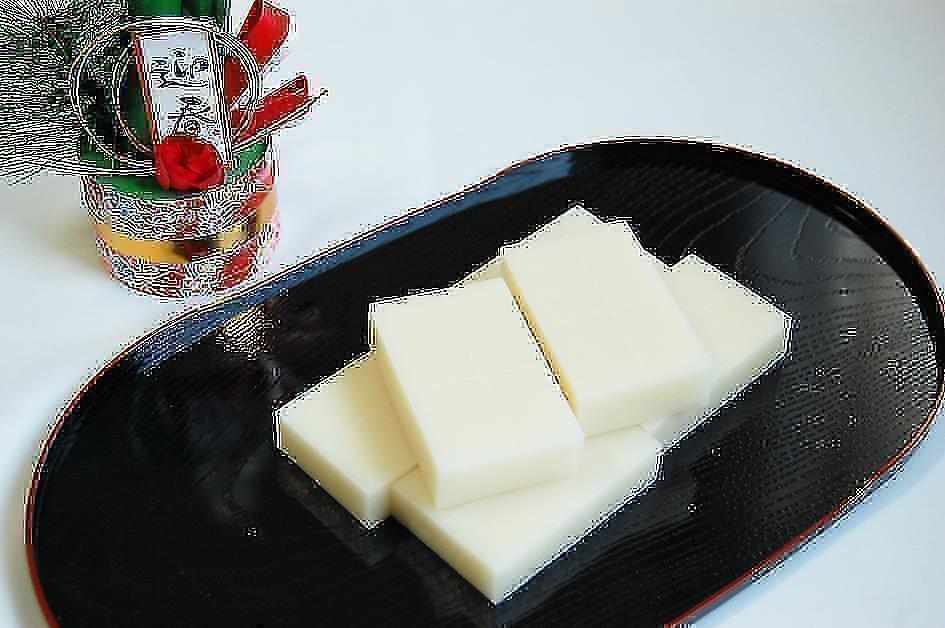
Kiri Mochi
Kiri Mochi is the dried, hard, rectangular plain Mochi which is also the form Mochi is most commonly bought at supermarkets in Japan.
They are bought in bulk during the New Year holidays by most households in Japan as they are plain and inexpensive, and can be customized in many different ways.
However, Kiri Mochi is not only eaten during the New Year's holidays. Kiri Mochi is the Mochi lover’s reliable all-year-round present best friend. Whether it is for a quick weekday dinner, or to satisfy a sudden craving for some plain, no-fuss Mochi, Kiri Mochi has your back.
Many brands make Kiri Mochi but the most popular brand is the one by Sato Foods Ltd., in an easily recognizable red and white packaging.
Spring
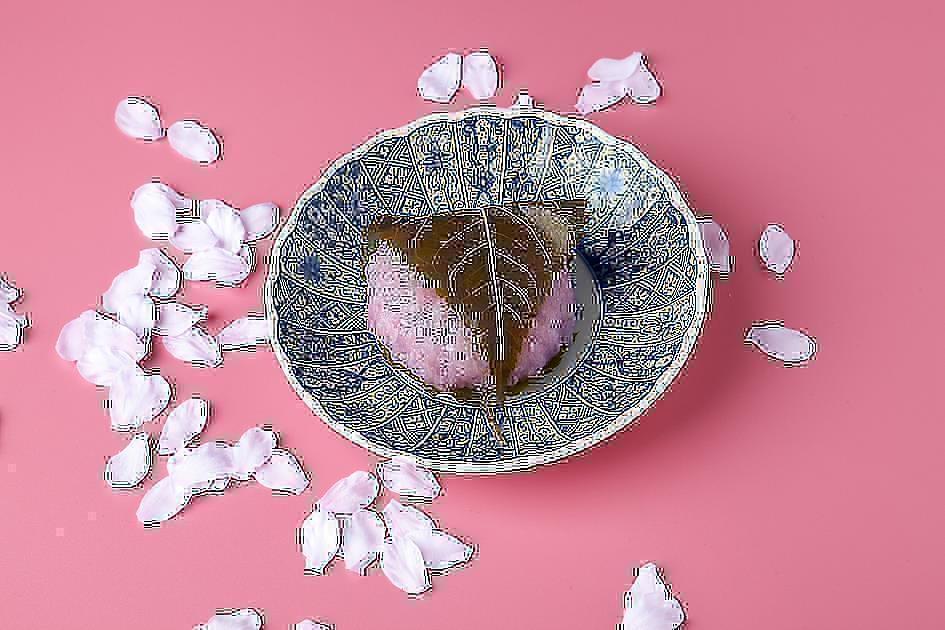
Sakura Mochi
Sakura or cherry blossom is the national flower of Japan.
Every year, the cherry blossoms of Japan attract visitors from all over the world. During this time, people go out with friends and families for a special picnic called “O-Hanami” or “Flower-viewing” where they enjoy food and company under these cherry blossoms.
Sakura Mochi is eaten throughout the Springtime, but especially during this O-Hanami celebration and on Hina Matsuri.
Sakura Mochi has a layer of Mochi that is the color of cherry blossoms (light pink) and a sweet filling made with red azuki beans (coarsely mashed or paste depending on the region) in the middle.
The Mochi is then wrapped by a salt-pickled cherry leaf, which is completely edible. The shape, size, and ingredients of Sakura Mochi vary by region but all of them are pretty, pink, and delicious.
Hina Matsuri
In Japan, March and April are known to be the months of spring and the 3rd of March every year is a very special day – Hina Matsuri, also known as “Girl’s Day” or “Doll’s Day”.
On this day, traditional Japanese dolls especially meant for this day are set on display at a dedicated space in the house. Several kinds of food are prepared and eaten on this day and they all have one thing in common – they are colorful and pretty.
As you can guess, the Mochi eaten to celebrate this day are also fabulously girly and beautiful.
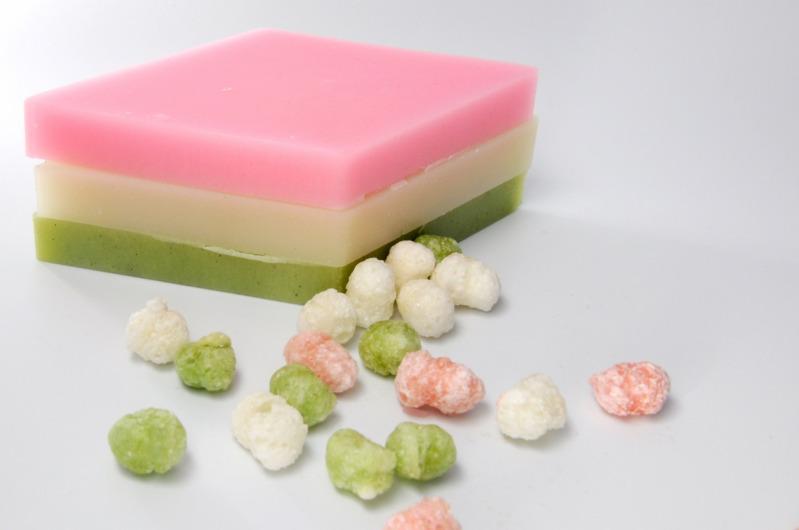
Hishi Mochi
Although Hishi Mochi is edible, its primary purpose is as a decoration for Hina Matsuri.
It is displayed as an offering in front of the Hina Matsuri dolls. It has three layers (regional varieties of 5 or 7 layers also exist) of Mochi in a rhomboid or diamond shape.
The three layers of Hishi Mochi are pink, green, and white. Each of these colors has a symbolic meaning in terms of color, as well as the source from which the pigment is derived.
Pink: The pink color represents Peach blossoms, that bloom during the Spring season in Japan. Peach blossoms are associated with fertility, charm, and good luck.
The pink coloration of this layer comes from the extract of Japanese Gardenia flowers. This flower is believed to have detoxifying effects, to ward off evil, and to pay homage to family ancestors.
White: The white color represents purity and the snow from the last winter that is melting away with the coming of spring. This layer also contains extract of Japanese water chestnut which is known to cure high blood pressure.
Green: The green color represents freshness and vitality. The color comes by incorporating Japanese mugwort leaves which is known to have medicinal qualities and to improve blood circulation.
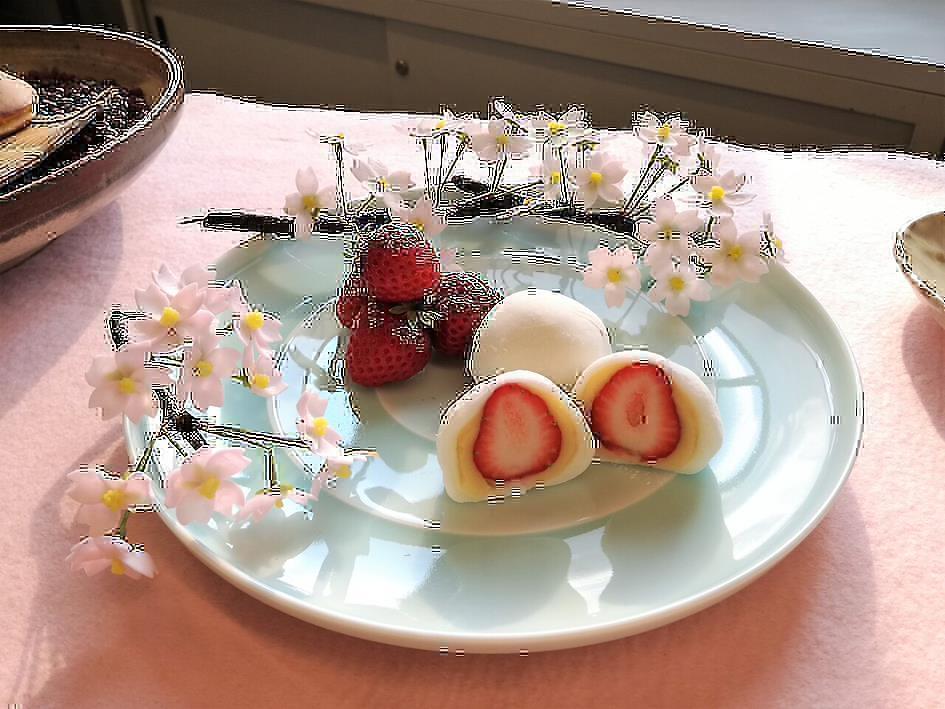
Ichigo Daifuku
First created around the '80s, Ichigo Daifuku is a comparatively newer addition to the tradition of Hina Matsuri.
However, it is one of the most popular these days due to its remarkable beauty and deliciousness. As we mentioned earlier, Daifuku is a Mochi with a sweet filling inside, usually made of red azuki bean paste. In Ichigo Daifuku, there is a fresh strawberry at the center, surrounded by red azuki bean paste.
When the Daifuku is cut into half, you can see the bright red strawberry surrounded by a thin layer of red bean paste and then the snow-white or baby pink layer of Mochi around it. It is a sight to behold.
The tart freshness of juicy strawberry mellowed by the sweetness of red beans in combination with the chewiness of Mochi – sounds mouthwatering, right?
Children’s Day
Children’s Day is a big annual celebration in Japan held on the 5th of May and is also known as “Boy’s Day” in Japan. This day celebrates the happiness and healthy growth of children.
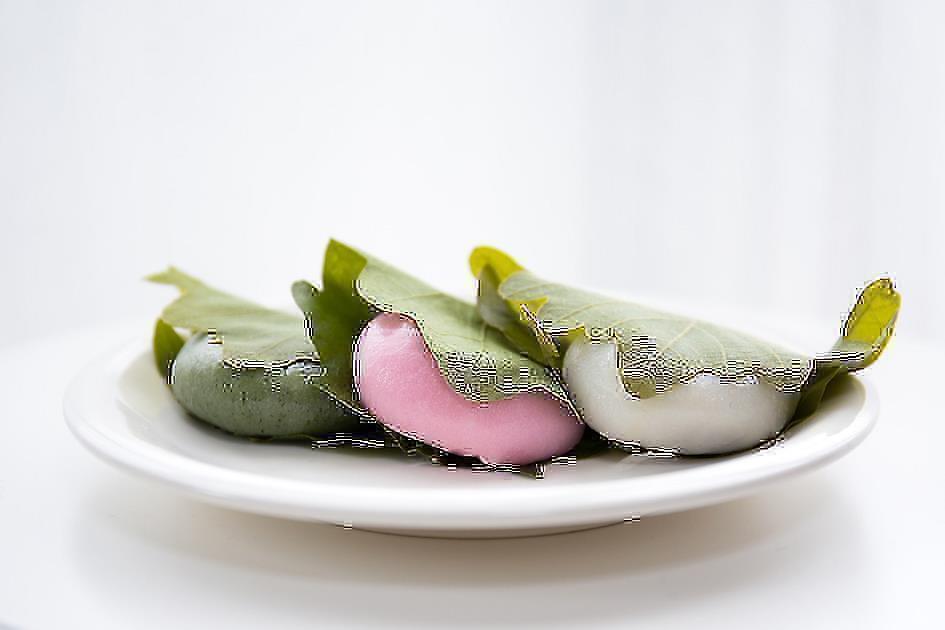
Kashiwa Mochi
“Kashiwa” is the Japanese emperor oak tree and this Mochi has a Kashiwa leaf wrapped around it. Unlike the cherry leaf around Sakura mochi, this leaf cannot be eaten.
The Mochi itself is white, round, and smooth, with a sweet filling in the middle. The filling is usually made with red bean paste but depending on the region it can also be white peach, sweetened miso paste, coarsely crushed red beans, etc.
The tradition of eating Kashiwa Mochi was started during the Edo period (1603 -1868).
Older leaves on Kashiwa trees do not fall off until the new buds sprout, and this is why Kashiwa plant is a symbol for the continuation of family lineage and prosperity for generations. Kashiwa Mochi is therefore eaten in the hopes that the children will grow up healthy and continue the family lineage.
Mochi-like but not exactly Mochi
These Japanese confections can be thought of as Mochi’s cousins, and although they might have the word “mochi” in their names or considered by some to be Mochi, they are not exactly Mochi.
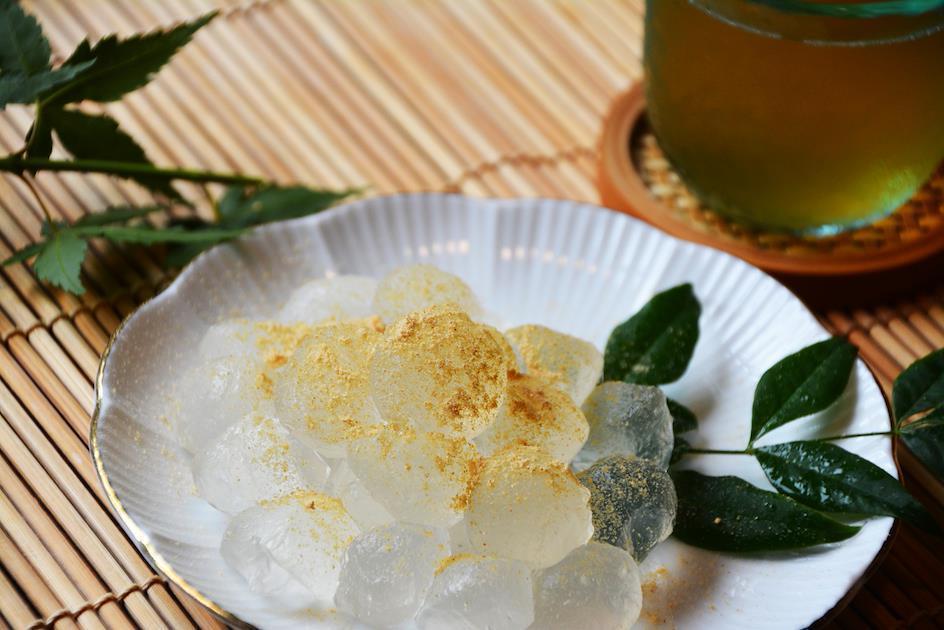
Warabi Mochi
Warabi Mochi is a traditional Japanese confection that is usually enjoyed during the summer. It has a Mochi-like appearance and softness, but it is made of Warabiko (Bracken starch) instead of glutinous rice.
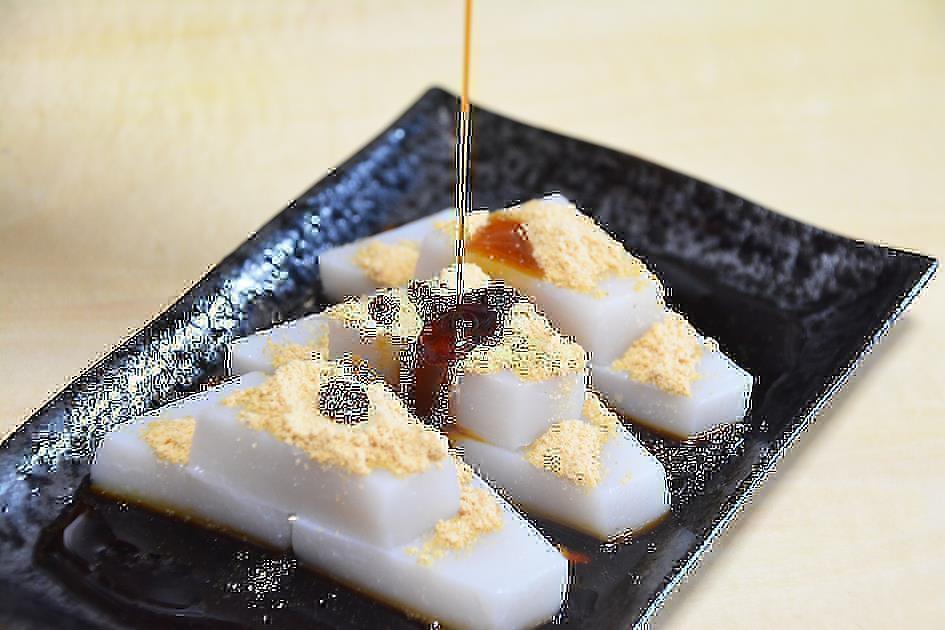
Kuzu Mochi
Kuzu Mochi is a delicious summer dessert that is served chilled with nutty Kinako powder as the topping. It is made from Kuzuko (starch powder made from the root of Kudzu plant)
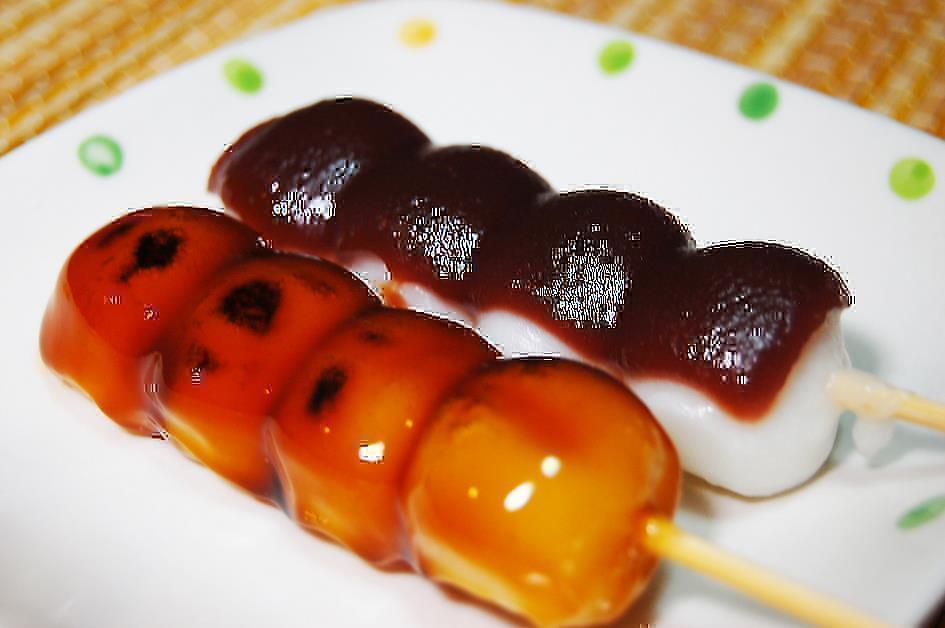
Dango
Dango is one of the most popular sweets in Japan and it is often considered to be a type of Mochi by many.
However, Dango is made using a mixture of Mochi rice flour and Uruchi rice flour, and hence, strictly speaking, it is not Mochi. It has a soft, chewy texture similar to Mochi but is not as stretchy or elastic.
The most common way Dango is served is as three Dango balls on a skewer with some kind of sauce or toppings.
Popular Mochi-based snacks
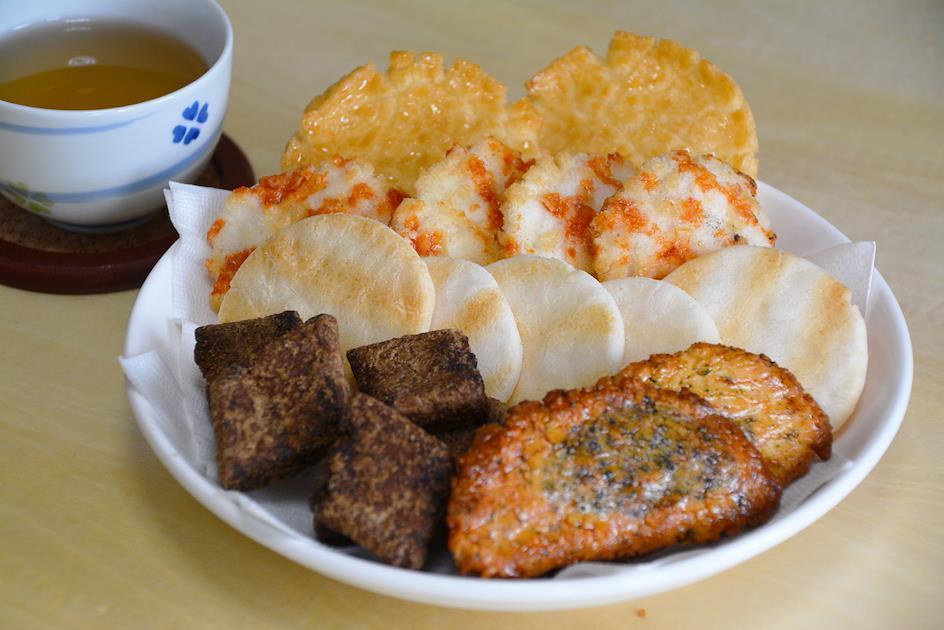
Okaki or Kaki Mochi
This is a traditional Japanese snack made by grilling or deep-frying pieces of dried Mochi.
The texture of Okaki is crunchy and crispy but also with an additional depth to each bite derived from the original chewiness of Mochi. The seasoning can be sweet or savory.
The smaller version of Okaki is known as Arare.
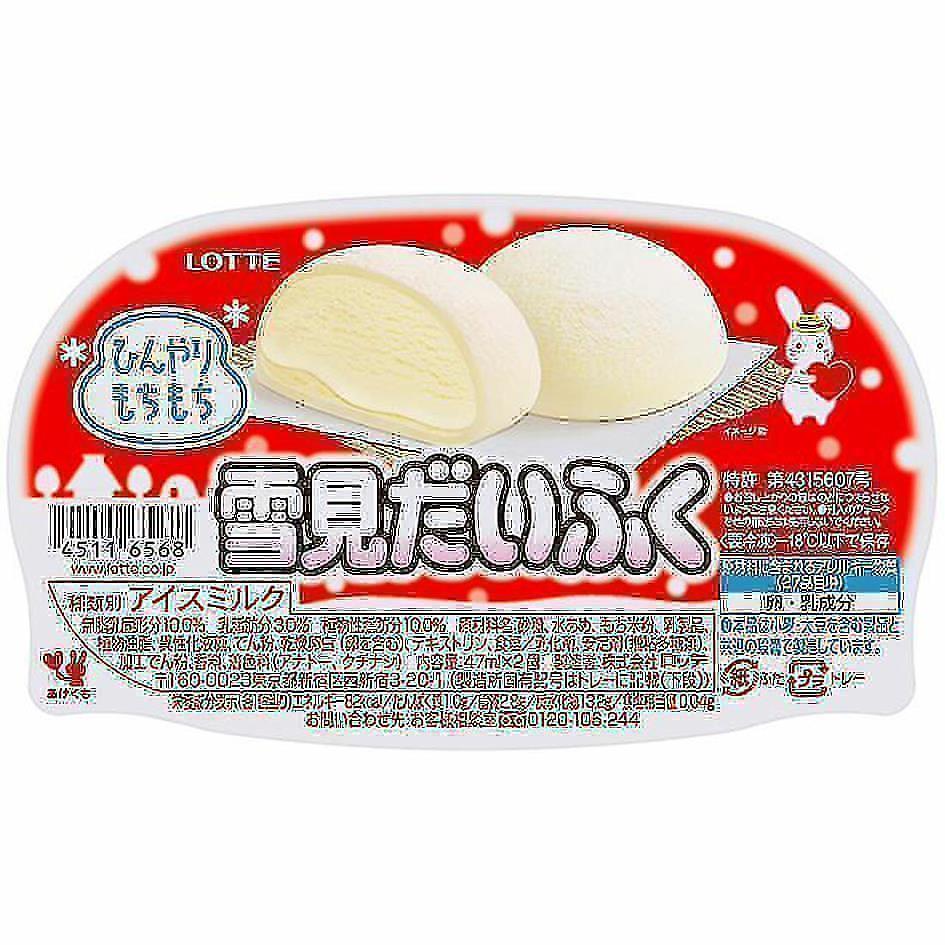
Mochi Ice-cream
Mochi Ice-cream is not a traditional Japanese snack, being only created during the 80s.
However since it entered the market, it has been outrageously popular and now it is made by different companies all over the world.
Mochi Ice cream has a layer of soft Mochi around an ice-cream filling.
Common ideas about Mochi - Myth or fact?
At any time of the year, Mochi is a hot topic of discussion and there is much curiosity, speculation, and fascination surrounding Mochi.
Here we will look at some of the most common questions people have about Mochi and try to find out if these are myths or facts.
Can Mochi Kill You?
Fact. But don’t be wary! As long as it is chewed well before swallowing it is completely safe.
The unique texture of Mochi is a double-edged sword; the chewiness and stickiness of Mochi that makes it so addictively good are also why it is a choking hazard for the elderly and very young children. However, it does not mean that they have to miss out on Mochi.
As long as it is cut into very small pieces, eaten slowly, and chewed properly, anyone can safely enjoy Mochi.
One Mochi has the same amount of calorie as a bowl of rice
Myth. In Japan, rice is eaten in small rice bowls and the amount of rice consumed is the first thing people watch out for when trying to maintain calorie intake as this is the main source of carbohydrate in Japanese cuisine.
'Watch how much Mochi you are eating because it has the same amount of calories as a full bowl of rice" is a common phrase you might be hearing frequently during the New Year’s celebration.
However, it is not completely true. One Kiri Mochi (the most common form of plain Mochi) contains about half of the number of calories in a bowl of rice. Therefore it will take two or three Kiri Mochi to make up the calorie content of a bowl of rice.
As long as it is eaten in moderation, Mochi is not a dangerously fattening mass of carbohydrate as many perceive it to be.
| |
Mass (grams)
|
Calories
|
|
1 Kiri Mochi
|
50g
|
120kcal
|
|
A bowl of rice
(Japanese rice bowl)
|
140g
|
240kcal
|
Pro tips: Depending on the variations, one Mochi can be healthier than the other. For example, varieties like Daifuku which has a sweet red bean filling have more calories and less nutritional value. Below are two healthier variations of Mochi
Kinako Mochi: Kinako Mochi is made with powdered whole soybeans and is rich in protein and iron. Kinako Mochi can also be made without adding any sugar.
Savory versions of Mochi such as Isobe Maki (seaweed and soy sauce) or Ozouni (soup with Mochi and other ingredients)
Mochi is gluten-free
Fact. Since Japanese Mochi rice is called “Glutinous rice”, it might be misunderstood as containing gluten. However, like other rice in general, Mochi rice is 100% gluten-free.
So there it is!
Everything you need to know about Mochi from variations, Mochi-making process, and how to eat it in a safe and healthy way.
There are many Japanese snacks out there in the world, and it's hard to keep track of them all.
We want you to be able to try every flavor that Japan has to offer! That is why we have created a subscription box service for our favorite treats from Japan.
Every month, your ZenPop Sweets Pack will bring you an assortment of everything from popular treats like KitKat, Pocky, and gummies - to new trends such as Dorayaki pancakes or Matcha flavored candies.
Every month we handpick an amazing variety of sweet snacks that are hard to find outside Japan so that every month is a surprise!
